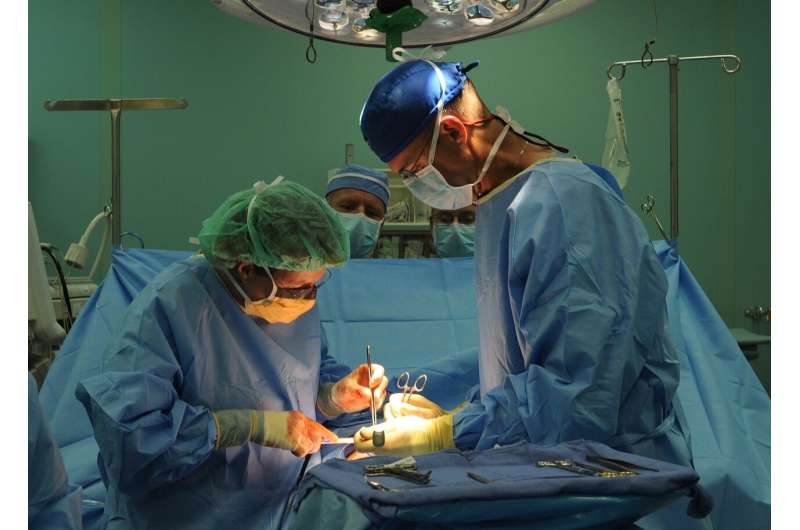
Many have assumed that the rates of major abdominal surgeries in adults over 65 is increasing over time as the U.S. population ages and as new technology renders surgical procedures safer for older adults. Contrary to this popular belief, a new study from the University of Chicago Medicine found the frequency of abdominal surgery in older adults is decreasing, especially among adults over the age of 85. The study, which examined data from 2002 to 2014, was published May 10 in the Journal of the American Geriatric Society.
While the research was not able to determine the exact reasons for this shift, the results indicate that improvements in medical treatments and cancer screening for older adults may be reducing the need for invasive surgeries, which can have negative impacts on patient’s long-term quality of life.
“There was a really stark decrease in the number of surgeries among older adults over the age of 65 throughout the study period,” said first author Daniel Rubin, MD, Associate Professor of Anesthesia and Critical Care at UChicago Medicine. “This suggests we’re getting better at determining who would benefit most from a surgery, and also possibly that we’ve developed better and less invasive alternative treatments.”
Rubin was inspired to investigate this question after reading a 2019 New York Times article discussing “routine” surgeries in adults over 85.
“This is a very personal topic for me because I was very close to my grandparents, and I saw their experiences with geriatric surgeries,” said Rubin. “My grandmother had an emergency hysterectomy at 92. Despite a stay in the intensive care unit and delirium she was able to go home and live independently afterward. My 89-year-old grandfather, on the other hand, declined a Whipple procedure for treating pancreatic cancer. So I could see early on how these big surgical interventions can really affect older adults.”
While the researchers found the overall frequency of surgery in older adults is decreasing, they did note some exceptions.
“The biggest surprise was that we saw a redistribution of surgical procedures to certain types of hospitals,” Rubin said. “There was a large shift away from rural and non-teaching urban hospitals to major academic medical centers; these were the only hospitals that saw an increase in the frequency of procedures performed on older adults. We think this may be due to increased specialization and that some procedures that may not be available at a smaller or rural institution are more likely to be offered at a larger, academic hospital.”
Another trend that was less surprising was the increase in certain procedures, such as the Whipple procedure for treating pancreatic cancer. “With pancreatic cancer, there aren’t really many less-invasive options available, and outcomes are generally good even for older adults,” Rubin said. “We perform Whipple procedures on 85- or 90-year-old adults here at UChicago Medicine simply because it is usually the most effective option.”
The researchers say these results are important because older adults often struggle to recover after major surgeries. The study found that over half of adults over 85 will require at least some transitional, post-acute medical care after a surgical procedure.
“Older adults really want to get back to their normal life after an operation,” said Rubin. “But recovery can be difficult, and the rates at which older adults require post-acute care—such as time in a rehabilitation facility or long-term care—is high. These results can help inform the decisions made by patients and providers on whether or not a surgery is the right choice for them.”
Understanding how trends in surgical procedures change over time can help illuminate which options are the most likely to lead to optimal outcomes—and determine which patients will most benefit from specific interventions.
Source: Read Full Article